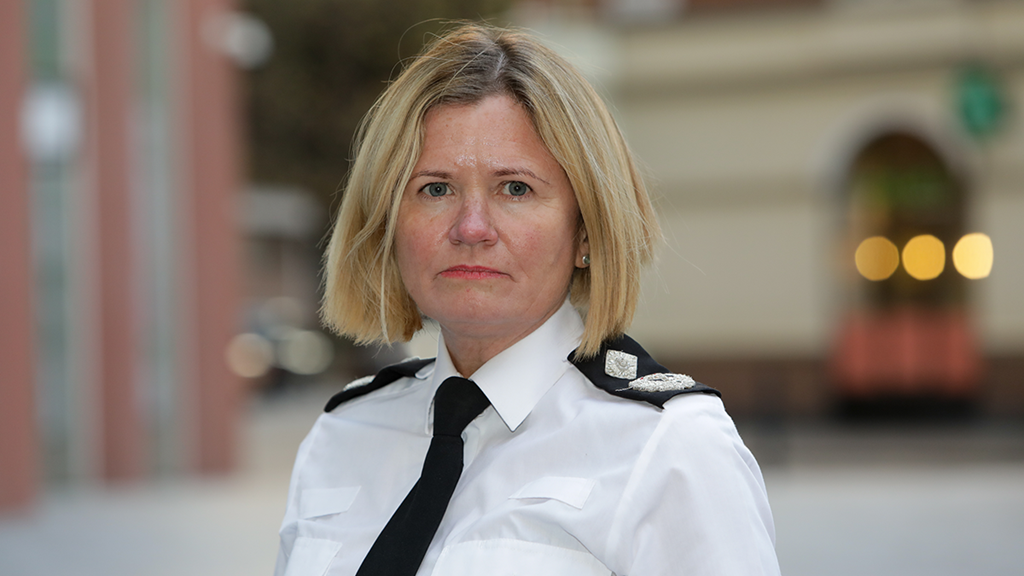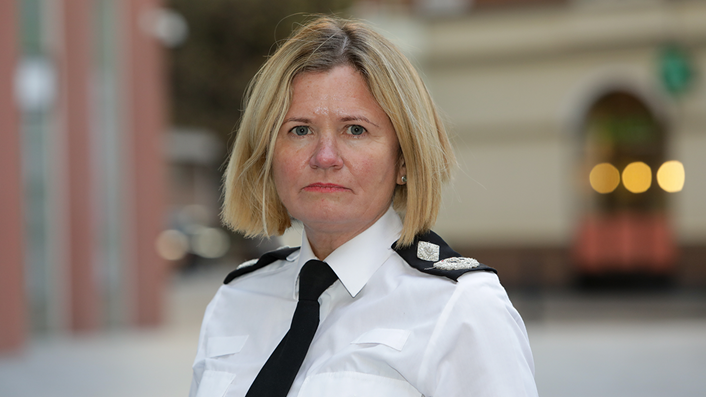
14 Mar 2023
First violence against women and girls benchmark published
In December 2021, National Police Chiefs’ Council (NPCC) and College of Policing set out priority actions for all police forces in England and Wales to bring consistently high standards to the police response to violence against women and girls.
The first assessment of police performance is published today providing a critical baseline based on data gathered between October 2021 and March 2022. Subsequent national assessments will be published annually.
A key area of focus in the national framework is responding unequivocally to allegations of police-perpetrated abuse and addressing sexism and misogyny within policing.
Data released today as part of the performance assessment shows that during the period 1 October 2021 and 31 March 2022, 653 conduct cases against 672 individuals were flagged as relating to violence against women and girls by police forces in England and Wales as well as the British Transport Police (BTP). In the same period, 524 public complaint cases against 867 individuals were recorded. In total this equates to 0.7 per cent of the police workforce employed in March 2022.
'I think the trust from women and girls.... has been lost in policing'
— BBC Breakfast (@BBCBreakfast) March 14, 2023
Deputy Chief Constable Maggie Blyth from the National Police Chiefs' Council spoke to #BBCBreakfast about figures revealing most complaints against the police by women are dropped https://t.co/eKaBVoEyce pic.twitter.com/37xlUVAzk9
The complaint and conduct cases are categorised against a range of definitions from the Independent Office of Police Conduct (IOPC), which includes sexual harassment (defined as unwanted behaviour of a sexual nature, including sexual comments, propositions, leering and sexual posts on social media), discreditable conduct (defined as behaviours that occur while not in the execution of their duty) and sexual assault.
Almost two-thirds of the public complaints were categorised as use of force (63 per cent). In these cases, women will have complained about the use of force in handcuffing or arrest for example. Next most common was overbearing or harassing behaviour at 9 per cent. Sexual assault complaints made up 6 per cent of the total.
The most common definitions for conduct cases were:
- discreditable conduct 48 per cent
- sexual assault 19 per cent
- sexual harassment 13 per cent
Deputy Chief Constable Maggie Blyth, National Police Chiefs’ Council Coordinator for Violence Against Women and Girls, said:
“Our publication today reinforces the urgency and importance of our current mission to lift the stones and root abusers and corrupt individuals out of policing alongside delivering the long term, sustainable improvements to standards, vetting and misconduct processes we have promised.
“A range of allegations are included such as use of force, sexual comments, overbearing behaviour and sexual assault and the numbers under investigation equate to 0.7 per cent of the workforce.
“The vast majority of officers and staff are professional and committed but I know it is shocking to hear about any potential predators in policing and that this can further shake fragile trust.
“It’s important to be clear, data released today is intended to be a critical baseline for assessing police performance over time. It presents a picture from over a year ago rather than today.
“Over the past 18 months, Police Chiefs have focused on identifying wrongdoing in police ranks, strengthening misconduct investigations and toughening sanctions. My expectation is that the impact of those changes will be evident when we publish our next assessment – with more women having the confidence to report concerns, more investigations underway, more cases closed and more sanctions and dismissals.”
Key action in the past 18 months:
Identifying wrongdoing
Every force has a VAWG action plan, in line with the national VAWG framework, that has seen them strengthen reporting routes and review allegations of sexual misconduct or domestic abuse against officers.
This is supplemented by a nationally coordinated process to check all police officers and staff against the Police National Database (PND) to identify any intelligence or allegations by September 2023 that need further investigation and to build the capability to automate checks of intelligence on a continuous basis.
Police forces have been strengthening their counter corruption units and increasing proactive intelligence gathering and investigations in line with recommendations from His Majesty’s Inspectorate of Constabulary and Fire and Rescue Services (HMICFRS).
Strengthening vetting and misconduct investigations
All police forces are addressing failings in systems, processes and decision-making identified by HMICFRS in its review on vetting and misconduct; issues uncovered in a super-complaint about police perpetrated domestic abuse.
Following recommendations from an NPCC and College of Policing learning review published in October 2022, police forces are ensuring professional standards departments have a good working knowledge of current criminal investigation practice and access to expertise from rape and sexual assault investigators. They are also acting to ensure criminal and misconduct investigations run in parallel and there is effective joint working when misconduct and criminal investigations are being conducted by different teams.
Toughening sanctions
Forces are following guidance from the College of Policing updated in August 2022, which strengthens the guidance to misconduct decision makers on removing those who betray police values and treating any misconduct related to VAWG or discrimination with the utmost severity.
NPCC has called on all chief constables to take every possible step to root out those who do not uphold our standards including:
- Chairing accelerated hearings wherever the grounds are met. (Recent Home Office data showed that in 95% of these hearings, the officer was sacked by their chief constable, or would have been if they were still serving when the hearing happened.)
- Making submissions to the chairs of those independent panels, wherever appropriate, so that sanctions always meet the gravity of an offence.
- Seeking judicial review of decisions where appropriate.
Another key element of the assessment published today is on VAWG crimes and their police and criminal justice response. It shows, between October 2021 and March 2022, over 507,827 VAWG crimes were recorded, amounting to 16 per cent of all crime over that period. Of those, 61 per cent of investigations were finalised without a criminal justice outcome.
In response to data published on outcomes of police investigations of VAWG, DCC Blyth said:
“Our performance data reinforces what we already know - too many cases are closed because of evidential difficulties and victims withdrawing, and too few victims are receiving timely justice.
“We need to extend the learning from Operation Soteria Bluestone to all forms of violence against women so investigations are focused consistently on the behaviour of suspects and victims receive the service set out in the Victims' Code. This will see us bring more violent perpetrators to justice.
“This is a long-term mission for policing. I know we will only rebuild trust when the public and our staff see results and feel the impact of our actions.”
Assistant Chief Constable Iain Raphael, Director at the College of Policing, said:
“There is no place in policing for officers who abuse their position and corrode the public trust we rely on to keep everyone safe.
“Police in England and Wales are putting robust measures in place to tackle any abuse of power against women and girls and we are at the heart of supporting this position.
“Longer-term we are bringing in new measures to vetting and misconduct, and working across the service to bring consistency among all forces.”
Nicole Jacobs, Domestic Abuse Commissioner, said:
“Victims and survivors need to see that robust action is being taken by the police as confidence remains at an all-time low and I welcome this report by the NPCC.
“It shows that forces are taking steps in the right direction to tackle perpetrators within the police as well as addressing sexism and misogyny within policing. There is still a long way to go.”
Farah Nazeer, chief executive of Women’s Aid, said:
“These statistics have deeply worrying implications for women’s already low levels of trust in the criminal justice system. We are calling for the full implementation of the inspectorate’s recommendations on vetting, misconduct and misogyny in policing. Forces must also commit to the Centre for Women’s Justice recommendation that all criminal investigations into police perpetrators are carried out by an external police force.
“This data shows the staggering scale of violence against women and girls, and how far we are from ensuring women and children truly are safe: just 6% of more than half a million cases were closed with a suspect charged.
“These figures are completely unacceptable, but we understand that they are from a year ago and we are working closely with DCC Maggie Blyth to help improve them. While the NPCC’s commitment to drive forward progress is a step in the right direction, the government must also increase its oversight of the holistic criminal justice response to survivors to hold police forces, Police and Crime Commissioners, the Crown Prosecution Service and Courts as well as probation to account. We look forward to working with Maggie Blyth and others to bring about the desperately needed transformation.”
Sara Kirkpatrick, CEO Welsh Women’s Aid said:
“The monitoring of data in relation to how police forces across Wales respond to violence against women and girls is crucial in allowing us to scrutinise how this issue is being prioritised. Today’s data reinforces the need for root and branch reform within all police forces.
‘We welcome today’s announcement, and ongoing commitment to monitoring and accountability, at a time when confidence in the police is at an all-time low. Police forces must be stringent in their checks and misconduct investigations if they are to rebuild trust. We are disappointed that this data shows that only 6% of violence against women and girls related crimes currently result in a suspect being charged.
‘There is a duty on police forces to make it clear that no one exists above the law, especially not those whose sole purpose is to enforce that law, and to keep all citizens safe from violence, abuse and oppression.”
Further information:
Data table for conduct and complaint cases:
|
Data |
National Total |
|
Total number of unique VAWG complaint cases |
524 |
|
Total number of unique VAWG conduct cases |
653 |
|
Total number of unique VAWG cases |
1177 |
|
Total number of unique VAWG complaint allegations |
609 |
|
Total number of unique VAWG conduct allegations |
874 |
|
Total number of unique VAWG allegations (complaint and conduct) |
1483 |
|
Total number of unique subjects of PP VAWG complaint allegations |
867 |
|
Total number of unique subjects of PP VAWG conduct allegations |
672 |
|
Total number of unique subjects of allegations |
1539 |
Key definitions:
A complaint is any expression of dissatisfaction with a police force that is expressed by or on behalf of a member of the public.
A conduct matter is any matter which is not and has not been the subject of a complaint, where there is an indication (whether from the circumstances or otherwise) that a person serving with the police may have committed a criminal offence or behaved in a manner which would justify disciplinary proceedings.
VAWG complaint and conduct matters have been defined as those falling into the following categories from the police performance regulations and definitions from the Independent Office of Police Conduct (IOPC) Guidance_on_capturing_data_about_police_complaints_Jan2021.pdf (policeconduct.gov.uk):
- Delivery of duties (for example, police action following contact)
- Use of force (the use of force in handcuffing or arrest for example)
- Discriminatory behaviour.
- Abuse of position or corruption (for example, abuse of position for a sexual purpose.)
- Individual behaviours (for example, overbearing or harassing behaviours.)
- Sexual assault (rape, attempted rape, and any assault surrounding or involving circumstances of indecency)
- Sexual harassment (unwanted behaviour of a sexual nature, including sexual comments, propositions, leering and sexual posts on social media)
- Other sexual conduct (sexual behaviour that does not amount to sexual assault or sexual harassment, which includes soliciting of prostitutes and child sexual abuse material)
- Discreditable conduct (behaviours while not in the execution of their duty such as criminal offences or arrest. It can also include activity while on duty that is not in execution of their duty. This means they are on duty, but may, for example, while on their lunch break commit an offence.)
- Other (this includes any issues that do not fall into the other categories. This category is not used as a ‘catch all’ but where specific issues are identified.)
Data caveats
This is the first time that some of the data included in the report has been collected centrally. As much of the data has been drawn from administrative datasets there are known limitations and quality issues to consider. These limitations are set out on page five of the stat bulletin.
Historically, it has not been possible to identify all VAWG-related complaints and misconduct allegations. The data presented in this report is the first attempt to do so at a national level and as such caution should be applied when interpreting this data. More detail on the data limitations can be found in Appendix A, in Themes, learning and next steps following police forces’ reviews of police perpetrated violence against women and girls and section 3.3 of the User Guide to Police Misconduct Statistics.
The data represents a snapshot in time. Information on allegations and outcomes may have changed since this data was collected. For example, more allegations are likely to now have a final outcome
Soteria Bluestone has seen policing working with independent academics to uncover the deep rooted and systemic issues within policing to achieve the wholescale in rape and sexual offences investigation. The programme will produce a new operating model for investigating rape this summer.
Contact information
Communications office
By phone: 0800 538 5058
By email: press.office@npcc.police.uk




